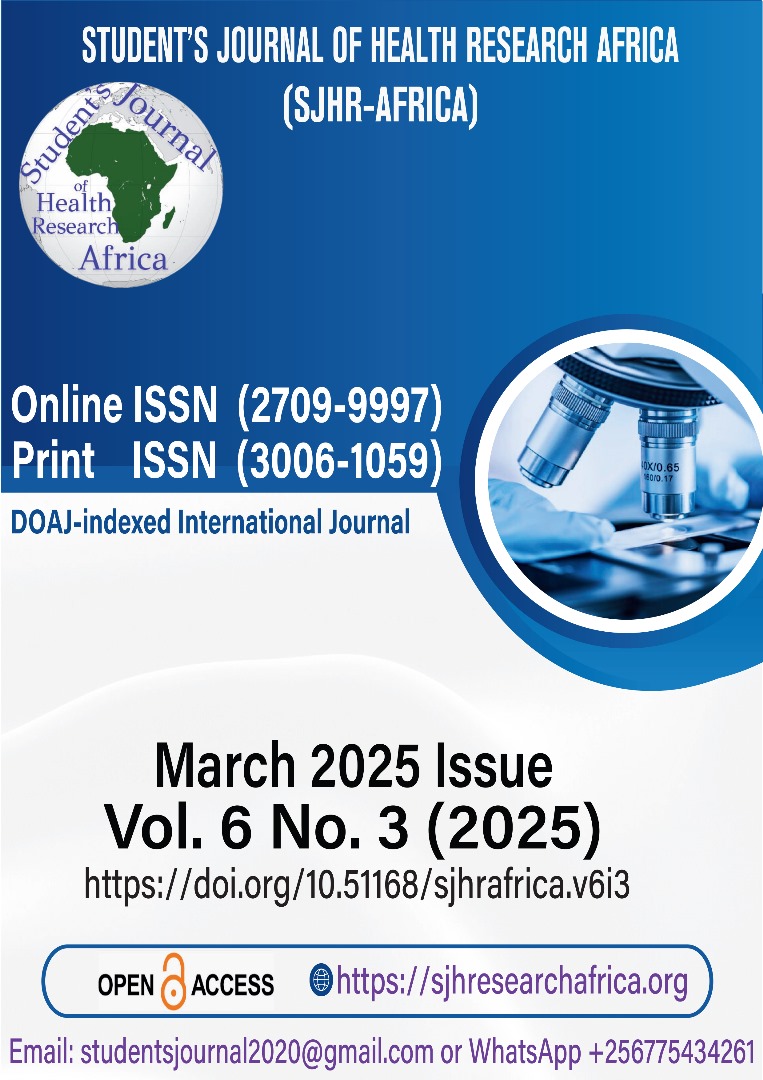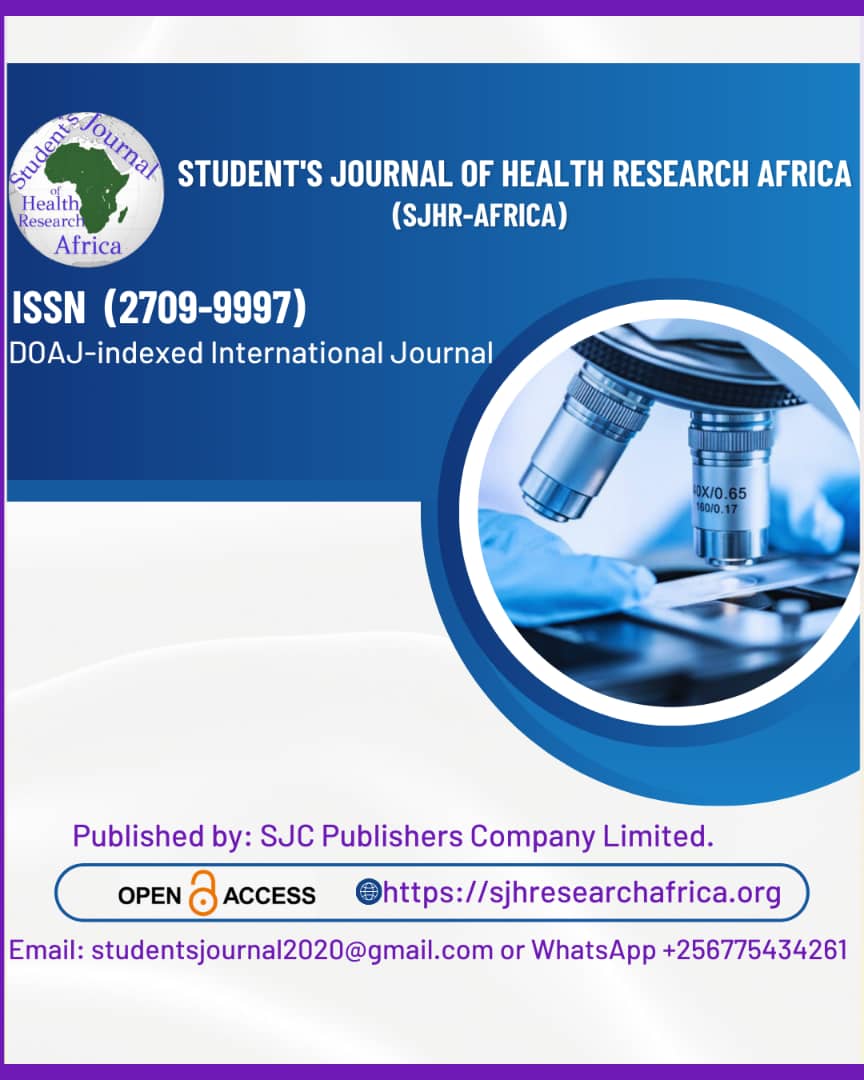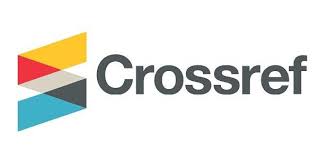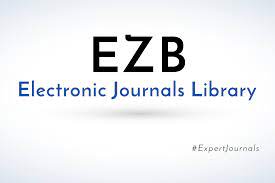STENTLESS AND STENTED URETEROSCOPIC LITHOTRIPSY IN MANAGEMENT OF URETERIC CALCULUS–A CROSS-SECTIONAL OBSERVATIONAL STUDY.
DOI:
https://doi.org/10.51168/sjhrafrica.v6i3.1647Keywords:
lithotripsy, ureterolithiasis, ureteral calculi, ureteroscopy, stentless ureteroscopyAbstract
Background
Ureterolithiasis is a common urological condition managed with ureteroscopic lithotripsy. While stents prevent strictures, they cause discomfort. This study compares postoperative pain and urinary symptoms in stented versus stentless patients to determine the optimal management approach.
Materials and Methods
This prospective observational study, approved by the Institutional Ethics Committee (MGMCRI/Res/01/2020/124/IHEC/190), included patients with ureteral calculi ≤10 mm. Exclusions were prior procedures, contraindications, or sepsis. Patients were divided into stented and stentless groups, assessing post-operative loin pain, frequency, urgency, and dysuria.
Results
The sociodemographic analysis revealed no significant differences between the stented and stentless groups in terms of age, gender distribution, or renal parameters (p>0.05). The mean age was 38.28±12.36 years in the stented group and 42.75±9.84 years in the stentless group, with a male predominance in the stented group (71.9%). On univariate analysis, there was no difference in age, renal parameters, size, and site of calculus in the stented and stentless groups. The study found that post-operative loin pain was significantly higher in the stented group (p=0.001), with greater symptoms of frequency (p=0.03), urgency (p=0.05), and dysuria (p=0.02). These findings suggest that stentless ureteroscopy may be preferable for reducing post-operative discomfort.
Conclusion
Stentless ureteroscopic lithotripsy reduces post-operative loin pain and urinary symptoms, improving patient quality of life. Stented patients experienced significantly more pain and symptoms from day 1 to day 14 post-surgery.
Recommendation
Stentless ureteroscopic lithotripsy is recommended for uncomplicated cases to minimize post-operative pain and urinary symptoms, improving patient recovery and quality of life.
References
López M, Hoppe B. History, epidemiology and regional diversities of urolithiasis. Pediatric nephrology. 2010 Jan;25:49-59.
Türk C, Petřík A, Sarica K, Seitz C, Skolarikos A, Straub M, Knoll T. EAU guidelines on interventional treatment for urolithiasis. European urology. 2016 Mar 1;69(3):475-82.
Harmon WJ, Sershon PD, Blute ML, Patterson DE, Segura JW. Ureteroscopy: current practice and long-term complications. The Journal of Urology. 1997 Jan;157(1):28-32.
Finney RP. Experience with the new double J ureteral catheter stent. The Journal of Urology. 2002 Feb 1;167(2):1135-8.
Aghamir SM, Mohammadi A, Farahmand H, Meysamie AP. Effects of prophylactic insertion of Double-J stents to decrease episodes of renal colic in patients with recurrent ureteral stones. Journal of Endourology. 2008 Mar 1;22(3):435-8.
Deliveliotis C, Ginanakopoulos S, Louras G, Koutsokalis G, Alivizatos G, Kostakopoulos A. Double-pigtail stents for distal ureteral calculi: an alternative form of definitive treatment. Urologia internationalis. 1996 Feb 4;57(4):224-6.
Leventhal EK, Rozanski TA, Crain TW, Deshon Jr GE, Dretler SP. Indwelling ureteral stents as definitive therapy for distal ureteral calculi. The Journal of Urology. 1995 Jan 1;153(1):34-6.
Chandhoke PS, Barqawi AZ, Wernecke C, Chee-Awai RA. A randomized outcomes trial of ureteral stents for extracorporeal shock wave lithotripsy of solitary kidney or proximal ureteral stones. The Journal of Urology. 2002 May 1;167(5):1981-3.
Makarov DV, Trock BJ, Allaf ME, Matlaga BR. The effect of ureteral stent placement on post-ureteroscopy complications: a meta-analysis. Urology. 2008 May 1;71(5):796-800.
Pollard SG, Macfarlane R. Symptoms arising from Double-J ureteral stents. The Journal of Urology. 1988 Jan 1;139(1):37-8.
Byrne RR, Auge BK, Kourambas J, Munver R, Delvecchio F, Preminger GM. Routine ureteral stenting is not necessary after ureteroscopy and ureteropyeloscopy: a randomized trial. Journal of Endourology. 2002 Feb 1;16(1):9-13.
Nabi G, Cook J, N'dow J, McClinton S. Outcomes of stenting after uncomplicated ureteroscopy: systematic review and meta-analysis. bmj. 2007 Mar 15;334(7593):572.
Assimos D, Krambeck A, Miller NL, Monga M, Murad MH, Nelson CP, Pace KT, Pais VM, Pearle MS, Preminger GM, Razvi H. Surgical management of stones: American Urological Association/Endourological Society guideline, PART I. The Journal of Urology. 2016 Oct;196(4):1153-60.
Netto Jr NR, de Almeida Claro J, Esteves SC, Andrade EF. Ureteroscopic stone removal in the distal ureter. Why change? The Journal of Urology. 1997 Jun 1;157(6):2081-3.
Shao Y, Zhuo J, Sun XW, Wen W, Liu HT, Xia SJ. Nonstented versus routine stented ureteroscopic holmium laser lithotripsy: a prospective randomized trial. Urological research. 2008 Oct;36:259-63.
Kenan I, Salih B, Suat E, Huseyin E, Vehbi K. Is routine ureteral stenting necessary after uncomplicated ureteroscopic lithotripsy for lower ureteral stones larger than 1 cm? Urological research. 2008 May;36(2):115-9.
Chen YT, Chen J, Wong WY, Shei-Dei Yang S, Hsieh CH, Wang CC. Is ureteral stenting necessary after uncomplicated ureteroscopic lithotripsy? A prospective, randomized controlled trial. The Journal of Urology. 2002 May 1;167(5):1977-80.
Başeskioğlu B, Sofikerim M, Demirtaş A, Yenilmez A, Kaya C, Can C. Is ureteral stenting necessary after ureteroscopic lithotripsy with balloon dilatation of the ureteral orifice? A multi-institutional randomized controlled study. World journal of urology. 2011 Dec;29:731-6.
Srivastava A, Gupta R, Kumar A, Kapoor R, Mandhani A. Routine stenting after ureteroscopy for distal ureteral calculi is unnecessary: results of a randomized controlled trial. Journal of Endourology. 2003 Dec 1;17(10):871-4.
Cevik I, Dillioglugil O, Akdas A, Siegel Y. Is stent placement necessary after uncomplicated ureteroscopy for removal of impacted ureteral stones? Journal of Endourology. 2010 Aug 1;24(8):1263-7.
Ordonez M, Hwang EC, Borofsky M, Bakker CJ, Gandhi S, Dahm P. Ureteral stent versus no ureteral stent for ureteroscopy in the management of renal and ureteral calculi. Cochrane Database of Systematic Reviews. 2019(2).
Borboroglu PG, Amling CL, Schenkman NS, Monga M, Ward JF, Piper NY, Bishoff JT, Kane CJ. Ureteral stenting after ureteroscopy for distal ureteral calculi: a multi-institutional prospective randomized controlled study assessing pain, outcomes, and complications. The Journal of Urology. 2001 Nov;166(5):1651-7.
Pengfei S, Yutao L, Jie Y, Wuran W, Yi D, Hao Z, Jia W. The results of ureteral stenting after ureteroscopic lithotripsy for ureteral calculi: a systematic review and meta-analysis. The Journal of Urology. 2011 Nov 1;186(5):1904-9.
Damiano R, Autorino R, Esposito C, Cantiello F, Sacco R, de Sio M, D’Armiento M. Stent positioning after ureteroscopy for urinary calculi: the question is still open. European urology. 2004 Sep 1;46(3):381-8.
Hussein A, Rifaat E, Zaki A, ABOL‐NASR MA. Stenting versus non‐stenting after non‐complicated ureteroscopic manipulation of stones in bilharzial ureters. International journal of urology. 2006 Jul;13(7):886-90.
Jeong H, Kwak C, Lee SE. Ureteric stenting after ureteroscopy for ureteric stones: a prospective randomized study assessing symptoms and complications. BJU International. 2004 May;93(7):1032-4.
Xu Y, Wei Q, Liu LR. A prospective randomized trial comparing non-stented versus routine stented ureteroscopic holmium laser lithotripsy. Saudi Medical Journal. 2009 Oct 1;30(10):1276-80.
Downloads
Published
How to Cite
Issue
Section
License
Copyright (c) 2025 Vasudevan T, Suvit Jumde

This work is licensed under a Creative Commons Attribution-NonCommercial-NoDerivatives 4.0 International License.






















